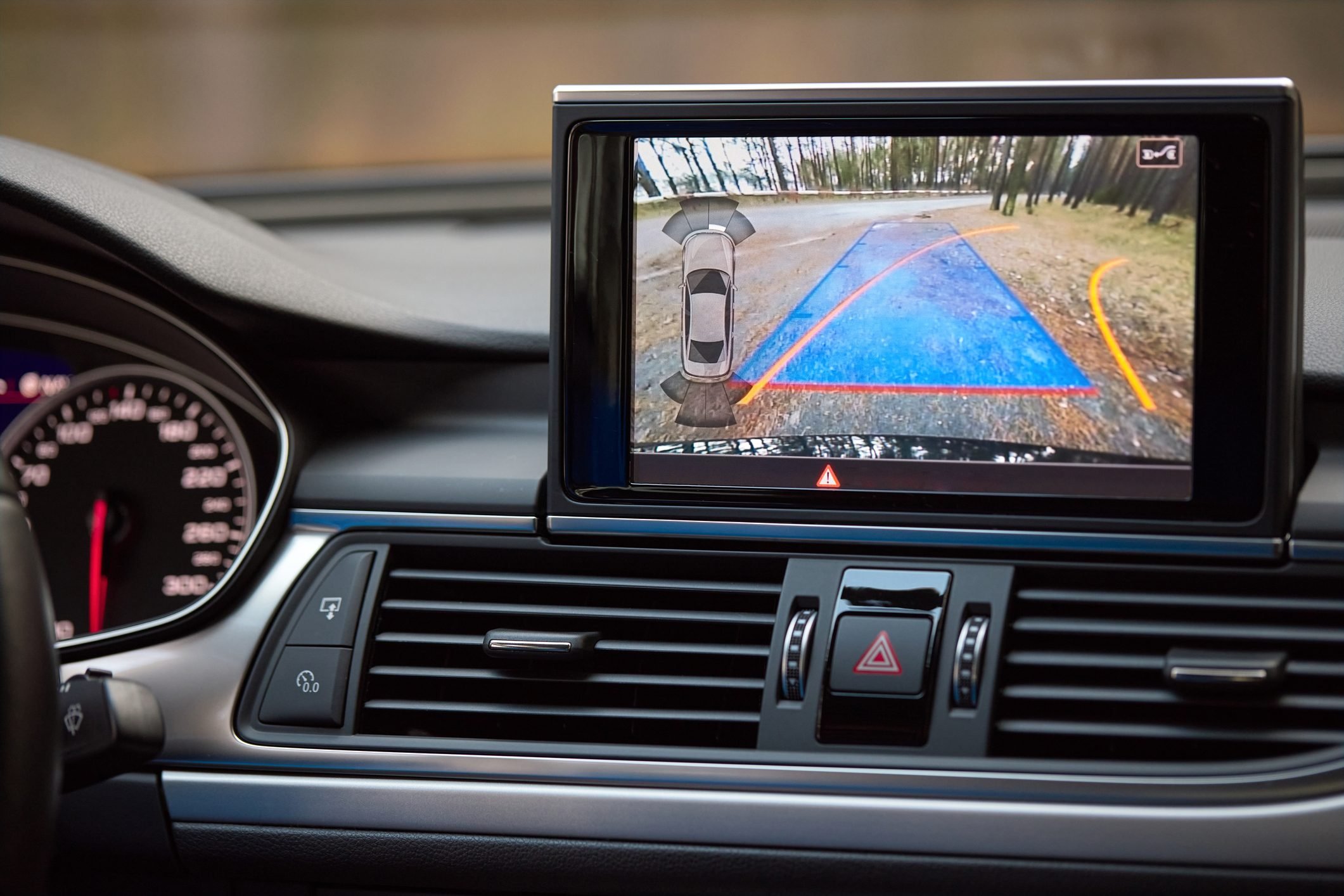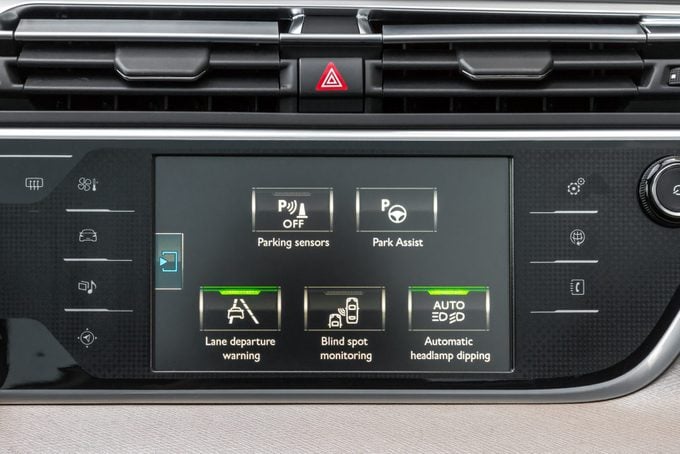Once thought of as science fiction, advanced vehicle technologies are improving driving safety and decreasing the number of accidents.

These 9 Innovations Made Cars Safer and More Comfortable

Innovative vehicle technologies make our cars and trucks safer to drive. As many as 20 on-board computers monitor and analyze data to prevent accidents before they happen, and help protect the driver and passengers from serious injury if an accident does occur.
Here are some of the vehicle technologies making driving safer.
On This Page
Brake/Stability Systems
Anti-lock brakes have been around for decades. They allow a driver to maintain control of the vehicle during emergency/panic braking.
Now, computer activated anti-lock braking systems are connected to other modern safety features, including electronic stability control, anti-skid assistance, traction control and driver assistance safety technologies (DAST). A report by the National Highway Traffic Safety Administration (NHTSA) showed anti-lock brakes are “beneficial in preventing pedestrian crashes, rollovers, run-off-road crashes and frontal crashes.”
Another NHTSA report shows electronic stability control saved an estimated 2,000 lives annually between 2011 and 2015. Even the low-tech center brake light prevents 200,000 crashes annually.
Driver Assistance Safety Technologies (DAST)
According to the NHTSA, DAST may reduce traffic accidents resulting from human error. Cameras, sensors and/or lasers placed throughout your vehicle, along with complex computer processing, alert you if you’re at risk of crashing.
Some manufacturers offer surround vision that employs multiple cameras and sophisticated algorithms to display an overhead digital image of your vehicle and surrounding area. Other DAST systems take action to prevent an accident, keeping you, your passengers, pedestrians and other drivers safer.
Collision warning
This DAST includes:
- Lane assist/departure control system: Minimizes accidents by turning on a dashboard warning lamp and vibrating the seat or steering wheel when the car drifts out of its lane. A study published by the Insurance Institute for Highway Safety (IIHS) shows lane departure prevention systems significantly lowered sideswipes and head-on crashes.
- Rear cross traffic and forward collision warning systems: When in reverse or drive, sensor data warns you of a possible collision with an object outside camera view.
- Blind spot monitoring: Delivers audio and/or visual alerts when it detects obstacles behind and on the side. A 2018 IIHS study showed “lane-change crashes were 23 percent lower among vehicles with blind spot monitoring than those without.”
Psst! If you like these, you might appreciate the Wolfbox Dash Cam, too. Also, find out what cars are made of.
Advanced Driver Control Assistance (ADAS)
ADAS takes control of the vehicle when necessary. In an IIHS report from March 2022, data show a significant decrease “of police-reported crashes and insurance claims for vehicles with ADAS technologies.”
Collision intervention
When a vehicle is moving, and specific parameters (speed, proximity to another vehicle or object) are met, the collision intervention system triggers the automatic emergency braking (AEB) system when sensing a crash is imminent.
A 2022 study by Consumer Reports suggests the U.S. could see 11,000 fewer traffic deaths annually if AEB was standard equipment on all cars.
This ADAS includes:
- Blind spot intervention/lane keeping assist: Autonomously applies the brakes and limits electronic steering if you try to change lanes with another vehicle in your blind spot, or if your car drifts out of the driving lane. A 2022 study by the National Library of Medicine showed blind spot intervention systems resulted in a 27 percent reduction in crash risk.
- Automatic pedestrian, reverse and emergency braking: Finely tuned sensors distinguish between an object and a person to spontaneously apply the brakes when sensing a person, or if you’re too close to the car in front or behind you. Depending on the year, make and model, AEB software can boost brake system pressure if the driver has applied the brakes and the system detects a potential crash. NOTE: Check your owner’s manual. A car with AEB may not brake for pedestrians.
- Adaptive cruise control (AAC): A blend of several DAST systems, ACC monitors and adapts to surrounding traffic. AAC will reduce speed to match that of the vehicle ahead of you. It also can slow or bring your vehicle to a complete stop, if necessary. State-of-the-art ACC systems can link into your vehicle’s GPS to automatically reduce speed when approaching a curve or upcoming exit.
Other ADAS systems

- Automatic crash notification (ACN): Notifies emergency responders and provides the location using the GPS system whenever an airbag deploys or an inertia sensor senses a crash. The NHTSA estimates ACN could save 300 lives each year.
- Parking assist systems (PAS): Searches for and identifies viable parallel parking spots, then helps guide you into the space. PAS cannot shift between drive and reverse, nor will it apply the brakes. That’s still on you!
- Headlight safety measures: Automatic high beam senses when to turn on and off. High beams and adaptive headlights swivel approximately 15 degrees in the direction the steering wheel turns, letting drivers see objects outside the normal headlamp illumination distance. This allows for quicker response times.
Passive Safety System
Passive safety features like crumple zones, which absorb the force of an impact, activate during an accident. These systems include seat belts, airbags and the vehicle construction itself, protecting passengers while minimizing damage.
- Airbags and side-impact airbags: Starting with the 1999 model year, airbags have been required in all new passenger vehicles. Working in tandem with three-point seat belts (mandatory in 1968), collapsible steering columns and padded dashboards, airbags, according to the NHTSA, saved more than 50,000 lives between 1987 and 2017. Although side airbags are not required by law, nearly all major manufacturers include them as standard equipment. According to the IIHS, in side impacts, curtain airbags can reduce life-threatening injuries by 52%. NHTSA estimates 2,000 lives would be saved every year if side airbags were mandatory.
Other Safety Technologies
Some technologies we didn’t know we needed, such as:
- Tire pressure monitors: Warns you of low tire pressure, saving 120 lives and preventing 8,400 injuries annually.
- Run-flat tires: Lets you drive safely to a repair shop or level area when a tire loses air pressure.
- Driver-attention monitor: Tracks your alertness (eyes, head position) and steering behaviors, then gives visual or audio warnings if it senses your attention is waning.
- Head-up displays (HUD): Keeps your eyes on the road and not the speedometer.
- Rear occupant alert: Minimizes the likelihood of a child or pet being left in the rear seat.
NOTE: Except for tire pressure monitors, which are required by law, all of the above items are optional equipment many manufacturers offer. Some are also available as aftermarket add-ons.




















